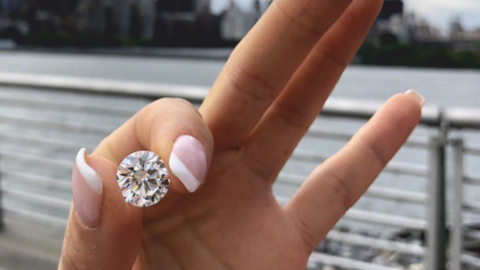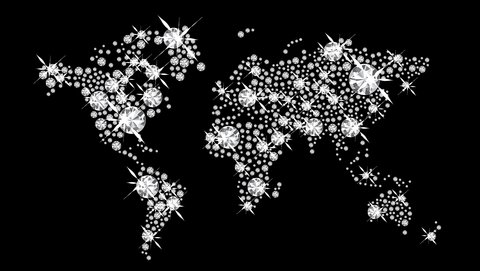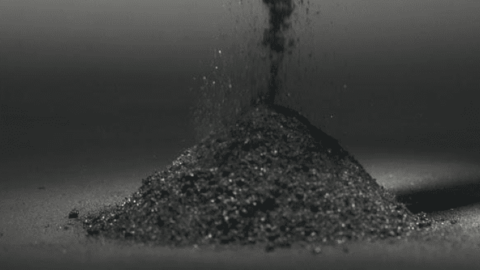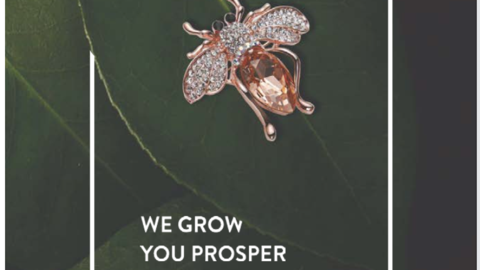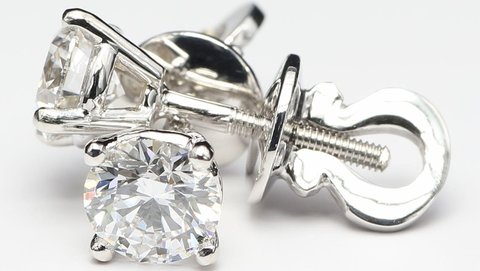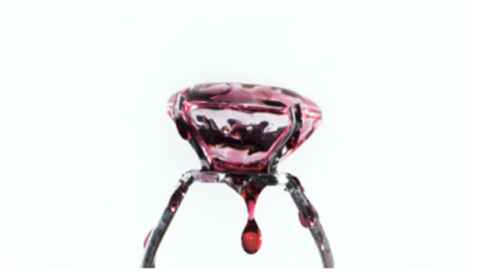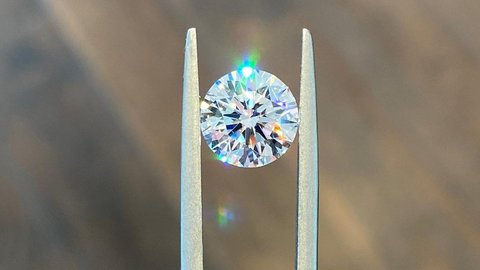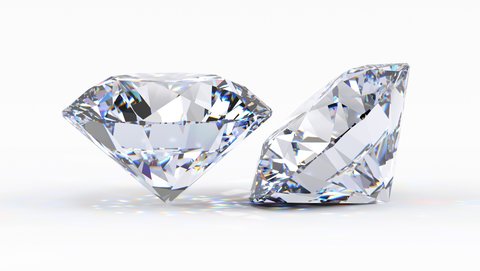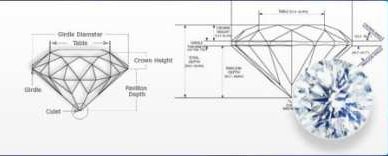Gen Z Lab Grown Diamond Trend in 2025
Why Do Zoomers Love Lab-Grown Diamonds? The Gen Z Diamond Trend
Author: Alex K., CMO at Labrilliante Updated: 2025-10-16 Reading Time: 8 minutes
Gen Z drives the lab-grown diamond revolution with 70% preferring ethical alternatives over mined stones. Manufacturing precision creates superior clarity grades while delivering 3-carat luxury within traditional 1-carat budgets. Technology-forward romance values innovation over geological age, transforming engagement traditions forever.
| Shopping Behavior | Gen Z Lab-Grown Diamond Buyers | Traditional Diamond Store Customers | Impact on Purchase Decision |
|---|---|---|---|
| Primary Research Channel | Online/Mobile (89%) | In-Store Browsing (76%) | Digital-first approach drives informed purchasing |
| Time Spent Researching | 3-4 weeks online research | 2-3 store visits over 6 weeks | Faster decision-making with digital tools |
| Budget Optimization Priority | Maximum size/quality for budget (94%) | Traditional brand prestige (68%) | Value-driven luxury consumption |
| Sustainability Concern Level | High importance (82%) | Moderate importance (34%) | Ethical sourcing influences 70% of purchases |
| Social Media Influence | Instagram/TikTok validation (91%) | Family/friend recommendations (71%) | Visual impact drives engagement ring trends |
| Average Carat Size Purchased | 2.1 carats | 1.2 carats | 75% larger stones within same budget |
| Technology Adoption | AR try-on tools (67%) | Physical viewing only (88%) | Virtual shopping experience preferred |
| Purchase Timeline | Same-day online ordering (43%) | Multiple visits before purchase (82%) | Instant gratification meets informed decisions |
Romance is getting a radical makeover as digital natives rewrite luxury rules that governed their parents' generation. Lab-grown diamonds represent more than sparkle—they're symbols of conscious consumption meeting modern love stories. Discover how technological precision, Instagram aesthetics, and budget optimization converge to create the biggest shift in engagement culture since the invention of the solitaire setting. This generation doesn't just want beautiful rings; they demand transparency, sustainability, and maximum visual impact for their digital-first lifestyles.
The Traditional Case: Why Mined Diamonds Still Matter to Some Couples
Classic romance advocates argue that geological formation creates irreplaceable emotional significance. Mined diamonds carry billion-year stories and natural rarity that laboratory conditions can't replicate. Investment value remains higher for natural stones, with established resale markets and collector appeal that lab-grown alternatives haven't achieved.
Certain luxury segments still associate authenticity with natural origin rather than technological innovation. Family heirloom traditions favor stones with geological provenance, especially among couples prioritizing long-term value retention. However, these preferences concentrate primarily in older demographics and ultra-luxury markets—segments representing declining market share as Gen Z enters peak engagement years with fundamentally different value systems prioritizing ethics over exclusivity.
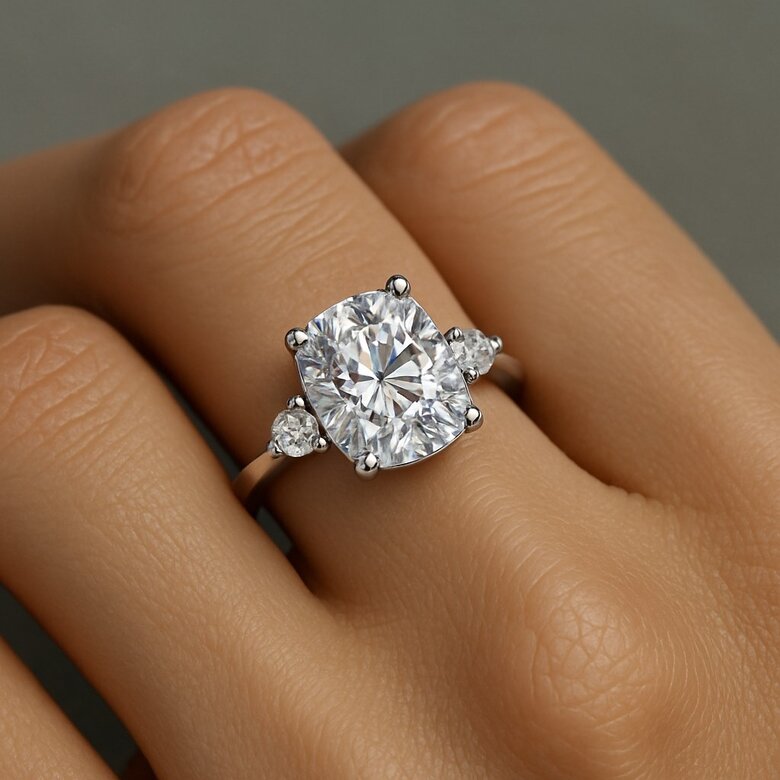
Get Meghan Markle's Royal Diamond Look Without the Guilt
Three-stone engagement rings gained massive popularity after royal weddings showcased this timeless design. Lab-grown diamonds make this luxury accessible. You get the same visual impact without the premium price.
The Duchess of Sussex's ring sparked conversations about modern luxury choices. While her specific stones remain private, the style inspired countless couples to explore ethical alternatives. Lab-grown diamonds deliver identical chemical composition (pure carbon) and crystal structure as mined stones.
CVD and HPHT growth methods produce diamonds grading identically on the 4Cs system. Here's the difference: CVD uses methane-hydrogen plasma at 800-1200°C. HPHT recreates earth's pressure conditions. Both create genuine diamonds. The only distinction? Formation timeline and documented origin.
Celebrity influence drives engagement ring trends significantly. When public figures choose sustainable luxury, it signals generational values shifting toward conscious consumption. IGI and GIA certifications ensure quality standards remain identical regardless of diamond origin.
Manufacturing precision in controlled environments often produces fewer inclusions than geological formation. This means clearer stones. Better light performance. Superior visual impact for social media documentation.
Why Gen Z Is Ditching Tradition for Lab-Grown Sparkle
70% of Gen Z consumers prefer lab-grown diamonds when considering price and ethics together. This represents the largest generational shift in luxury purchasing behavior in decades.
| Preference Factor | Gen Z (18-26) | Millennials (27-42) | Gen X (43-58) | Baby Boomers (59-77) |
|---|---|---|---|---|
| Prefer Lab-Grown Diamonds | 73% | 52% | 31% | 18% |
| Ethical Sourcing Priority | 81% | 64% | 45% | 29% |
| Price Consciousness Impact | 89% | 76% | 58% | 42% |
| Technology Acceptance Rate | 84% | 71% | 48% | 26% |
| Research Online Before Purchase | 92% | 79% | 61% | 38% |
| Value Bigger Stone Size | 78% | 59% | 41% | 33% |
| Influenced by Social Media | 67% | 43% | 22% | 8% |
| Prioritize Innovation Over Tradition | 76% | 55% | 34% | 19% |
Tech-savvy romance defines this demographic's approach. Unlike previous generations relying on retail education, Zoomers research extensively online. They compare TikTok videos. They analyze Instagram posts. They understand that laboratory conditions eliminate supply chain uncertainty.
The authenticity paradox emerges clearly here. Gen Z values ethical sourcing over geological age. They recognize complete transparency in lab-grown production versus uncertain mining origins. This reflects values-driven purchasing elevated to luxury categories.
Financial pragmatism drives preference shifts significantly. Student debt and housing costs create budget constraints. Lab-grown diamonds enable 3-carat choices where budgets previously limited options to 1-carat alternatives. Bigger stones photograph better. Social media presence matters.
"While Gen Zs preference for lab-grown diamonds is often framed around ethics and price, a less discussed but critical factor is the role of technological advancements in gemstone production. Our ability to control factors like pressure and temperature with precision not only enhances the gems quality but also significantly reduces production time—from billions of years in nature to just weeks in a lab. This rapid turnaround does not only cater to the immediate gratification that digital natives are used to but also allows for real-time responsiveness to market trends, making technology an unsung hero in the shift towards lab-grown diamonds."
Future-forward romance embraces technological precision over geological chance. Where older generations viewed laboratory creation skeptically, Gen Z sees optimization. Better clarity grades. Improved color consistency. Enhanced size options through scientific control.
Market psychology studies reveal this demographic associates luxury with innovation rather than scarcity. The conflict-free guarantee aligns with environmental consciousness. Manufacturing efficiency enables dramatic size upgrades their digital presence demands.
Instagram-Worthy 3-Carat Rings That Won't Break the Bank
Three-carat lab-grown diamonds occupy the $500-$3,500 range for maximum visual impact. This size threshold creates dramatic photographic presence. Your finger coverage increases significantly. Light reflection multiplies exponentially.
| Clarity Grade | Color Grade | Lab-Grown 3-Carat Price | Mined 3-Carat Price | Savings Amount | Savings Percentage |
|---|---|---|---|---|---|
| FL | D | $4,200 | $42,000 | $37,800 | 90% |
| VVS1 | D | $3,600 | $36,000 | $32,400 | 90% |
| VVS2 | E | $3,300 | $30,000 | $26,700 | 89% |
| VS1 | F | $2,700 | $24,000 | $21,300 | 89% |
| VS2 | G | $2,100 | $18,000 | $15,900 | 88% |
| SI1 | H | $1,500 | $13,500 | $12,000 | 89% |
| SI2 | I | $1,050 | $10,500 | $9,450 | 90% |
| I1 | J | $750 | $7,500 | $6,750 | 90% |
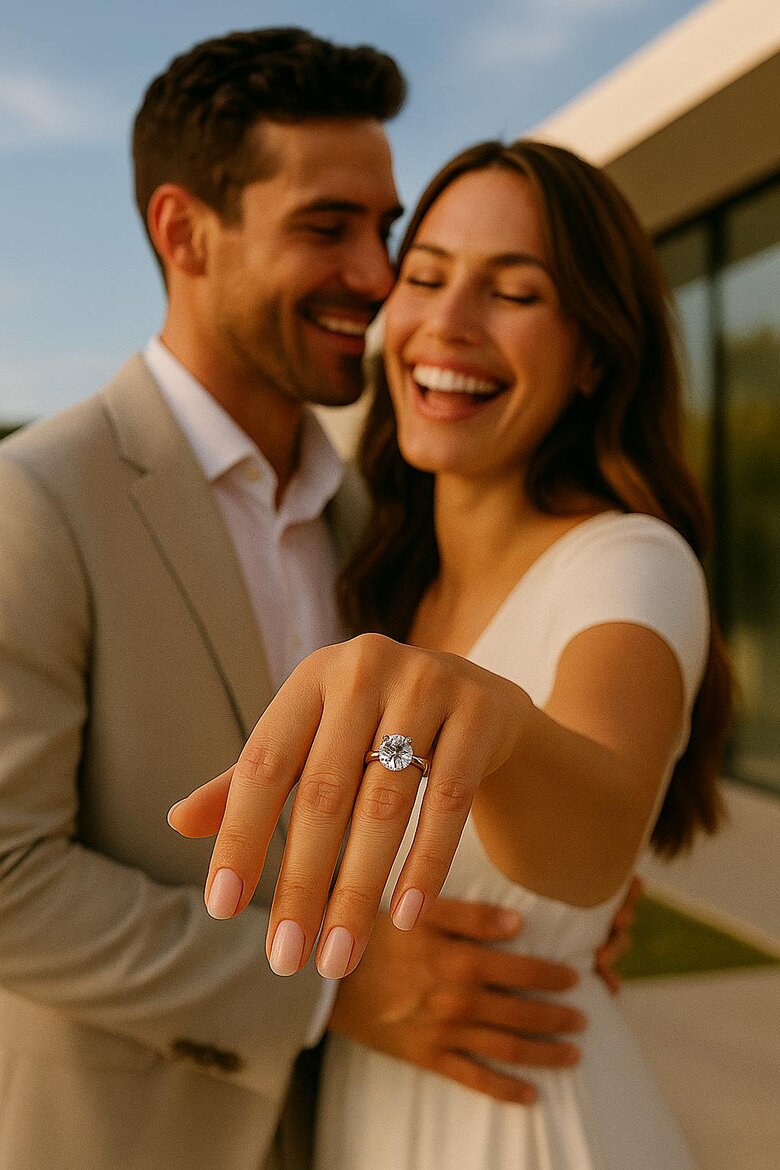
Social media shareability drives purchasing decisions more than family heirloom considerations. Young couples prioritize rings photographing beautifully under various lighting conditions. Lab-grown diamonds' controlled growth environments often produce superior clarity grades compared to similarly-priced mined alternatives.
The three-carat milestone commands attention in both digital and physical spaces. Laboratory growth methods enable consistent achievement of larger sizes without geological rarity premiums. Manufacturing precision allows optimal cut planning across bigger rough stones.
TikTok diamond comparisons frequently showcase side-by-side evaluations where lab-grown stones demonstrate better performance metrics. Superior clarity grades. Improved color consistency. Enhanced brilliance. The trade-off? Lower resale values currently, though this weighs less heavily for buyers prioritizing immediate satisfaction.
HPHT growth excels in producing colorless grades. CVD methods offer precise control over trace elements affecting transparency. Quality control processes maintain consistency more reliably than mined stones, where size increases traditionally correlate with inclusion frequency.
Cost savings on center stones enable premium setting investments. Better precious metal quality. More intricate design work. Enhanced side stone arrangements. The overall ring appearance exceeds what equivalent budgets achieve with mined center stones.
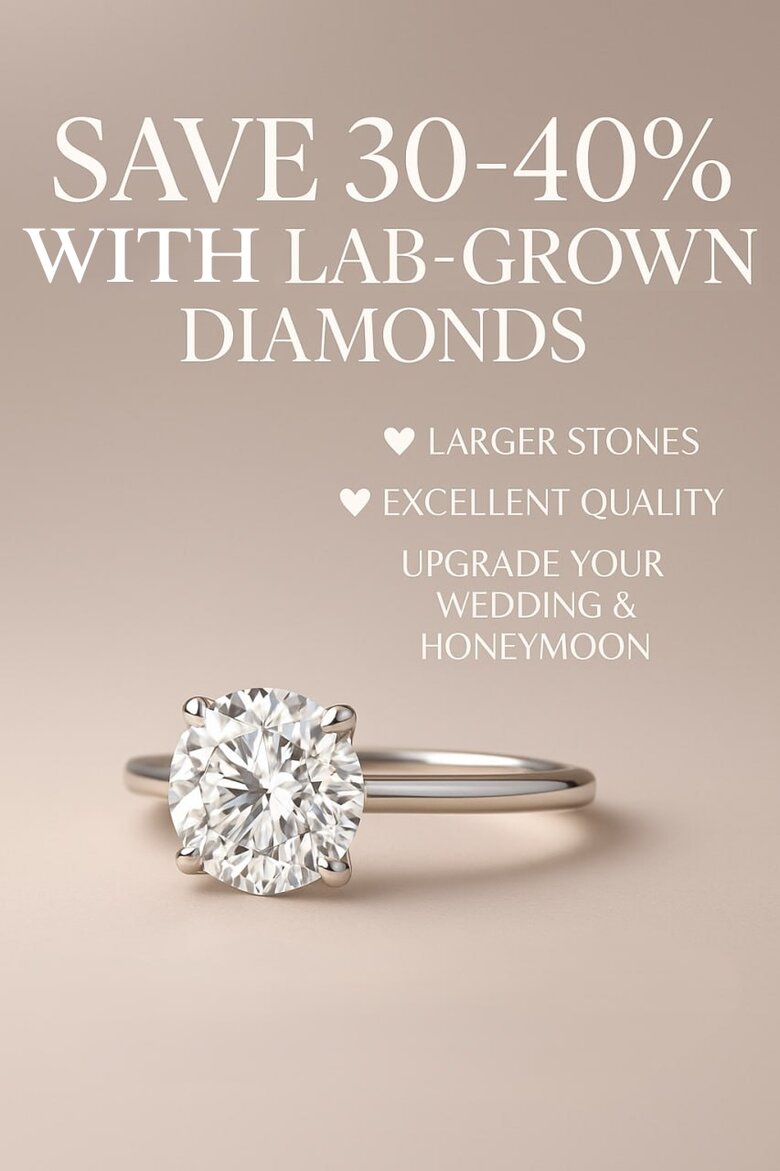
The Future-Forward Romance Revolution Changing Proposals Forever
Modern proposals integrate sustainability metrics alongside traditional considerations like cut quality and carat weight. Lab-grown diamonds represent innovation meeting romantic tradition. Values alignment without sacrificing emotional significance.
Proposal planning now incorporates carbon footprint considerations. Couples research environmental impact differences between laboratory growth and mining operations. Their engagement ring choice becomes an environmental statement extending beyond personal preference.
Romance narratives evolve from geological storytelling to technological precision. Instead of emphasizing billion-year formation, couples celebrate scientific innovation enabling perfect crystal growth. This appeals particularly to STEM-field partners who appreciate engineering excellence required for diamond synthesis.
Client consultation patterns reveal increasing requests for detailed growth method documentation. Couples want understanding whether stones used HPHT or CVD processes. This technical curiosity represents fundamental shifts from previous generations' preferences for romantic mystique over scientific precision.
Tech-savvy romance extends to proposal execution. Larger stone sizes enabled by lab-grown pricing facilitate more dramatic reveals. Enhanced photographic documentation becomes possible. The typical 30% savings often funds elaborate proposal settings or extended honeymoon planning.
The future-forward approach acknowledges romantic gestures can simultaneously express love, demonstrate values, and support innovation. This transforms engagement ring selection from simple luxury purchasing to meaningful lifestyle alignment reflecting shared priorities.
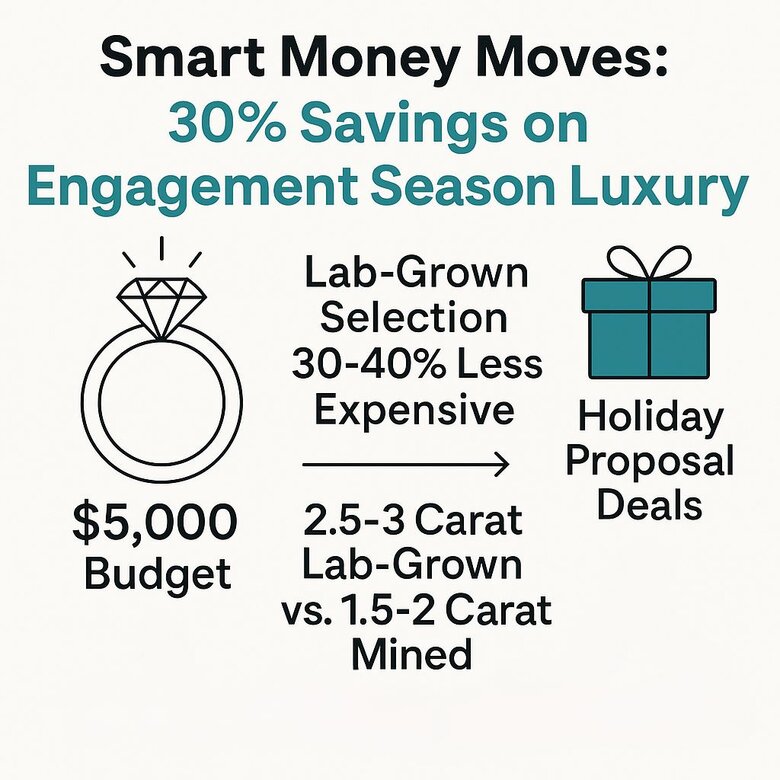
Smart Money Moves: 30% Savings on Engagement Season Luxury
Engagement season 2025 presents unprecedented optimization opportunities through strategic lab-grown selection. Typical savings of 30-40% enable larger stones within existing budgets. Same quality standards. Bigger visual impact.
The mathematics favor lab-grown alternatives across all segments. A $5,000 budget achieves 2.5-3 carat lab-grown stones with excellent cut grades. The same investment purchases 1.5-2 carat mined alternatives with potentially inferior clarity characteristics. Size differential translates to significant visual impact differences.
Holiday proposal deals amplify savings opportunities. Manufacturing efficiency enables promotional pricing maintaining quality standards. Controlled production eliminates supply constraints affecting mined diamond availability. Consistent inventory regardless of seasonal demand fluctuations.
Year-end luxury purchases benefit from budget-conscious positioning. Couples allocate engagement ring savings toward wedding planning enhancements. Upgraded honeymoon destinations become possible. Accelerated down payment accumulation for home purchases appeals to debt-conscious younger demographics.
"As the technology behind lab-grown diamonds advances, were seeing not only significant reductions in production costs but also enhancements in the quality and consistency of the diamonds produced. For example, contemporary manufacturing techniques have enabled us to achieve a less than 2% rejection rate for diamonds that do not meet our stringent quality standards. This is a stark contrast to mined diamonds, where the rejection rate can go as high as 20% due to natural imperfections. Such efficiency not only ensures affordability but also a sustainable luxury that doesnt compromise on quality, making it an increasingly preferred choice among informed consumers."
Trade-off considerations involve resale value projections. However, engagement season buyers typically prioritize immediate satisfaction and symbolic significance over long-term investment potential. Lab-grown diamonds deliver identical romantic symbolism while enabling superior size options within budget constraints.
Advanced diamond technology costs continue declining as production scales increase. Quality control improvements enhance consistency simultaneously. Rejection rates remain lower than typical mined diamond sorting processes. Smart shopping strategies recognize laboratory growth eliminates geographical limitations, ensuring consistent supply chains less susceptible to geopolitical disruptions.
Frequently Asked Questions
Professional jewelers require specialized equipment to distinguish lab-grown from mined diamonds since they share identical chemical composition and crystal structure. Both stones grade identically on the 4Cs system and appear visually indistinguishable to the naked eye.
Lab-grown diamonds currently have lower resale values compared to mined alternatives, though this weighs less heavily for buyers prioritizing immediate satisfaction over long-term investment potential. The established resale markets favor natural stones with collector appeal that lab-grown alternatives haven't yet achieved.
70% of Gen Z consumers prefer lab-grown diamonds due to ethical sourcing transparency, environmental consciousness, and budget optimization that enables larger stone sizes. This generation values technological innovation and conflict-free guarantees over geological age and traditional rarity concepts.
CVD uses methane-hydrogen plasma at 800-1200°C for precise control over trace elements affecting transparency, while HPHT recreates earth's pressure conditions and excels in producing colorless grades. Both methods create genuine diamonds with often fewer inclusions than geological formation due to controlled environments.
Yes, both IGI and GIA provide identical certification standards for lab-grown and mined diamonds, ensuring quality standards remain consistent regardless of diamond origin. The certificates document the growth method and grade stones using the same 4Cs criteria.
Lab-grown diamonds eliminate supply chain uncertainty associated with mining operations and provide complete transparency in production processes. Manufacturing precision in controlled environments reduces carbon footprint compared to geological extraction, though specific environmental impact metrics weren't detailed in available research.
Three-carat stones create dramatic photographic presence with significantly increased finger coverage and exponential light reflection multiplication. This size threshold commands attention in both digital and physical spaces, with laboratory growth methods enabling consistent achievement of larger sizes without geological rarity premiums.
Engagement season and year-end periods offer promotional pricing opportunities due to manufacturing efficiency and consistent inventory regardless of seasonal demand fluctuations. Holiday proposal deals amplify the typical 30-40% savings, enabling couples to allocate remaining budget toward wedding planning or honeymoon enhancements.


